Hello, friends of this beautiful community of #CrossCulture. In this, my first post in the community, I would like to share my experiences with one of the best-known musical-dance expressions in Cuba: the congas and comparsas (carnival groups). I hope you’ll join me on this wonderful journey through history and culture.
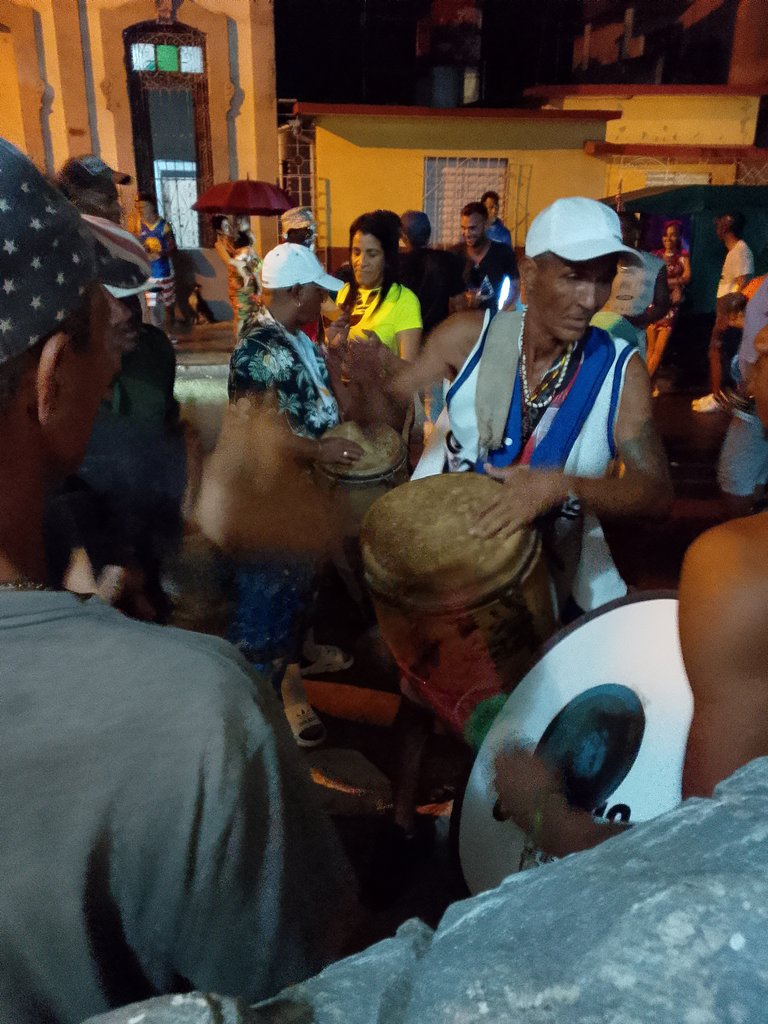
In Cienfuegos, as in any place in Cuba, it’s easy to find a conga vibrating through a neighborhood, street, park, or avenue because it is part of our identity. And in the congas and comparsas, there are no differences based on color, nor discrimination for who you are.
Many times, I’ve found myself dancing—or as we say in Cuba, "rolling along" behind a conga—thanks to the cultural blending that has flowed through the bloodlines of all Cubans for centuries.
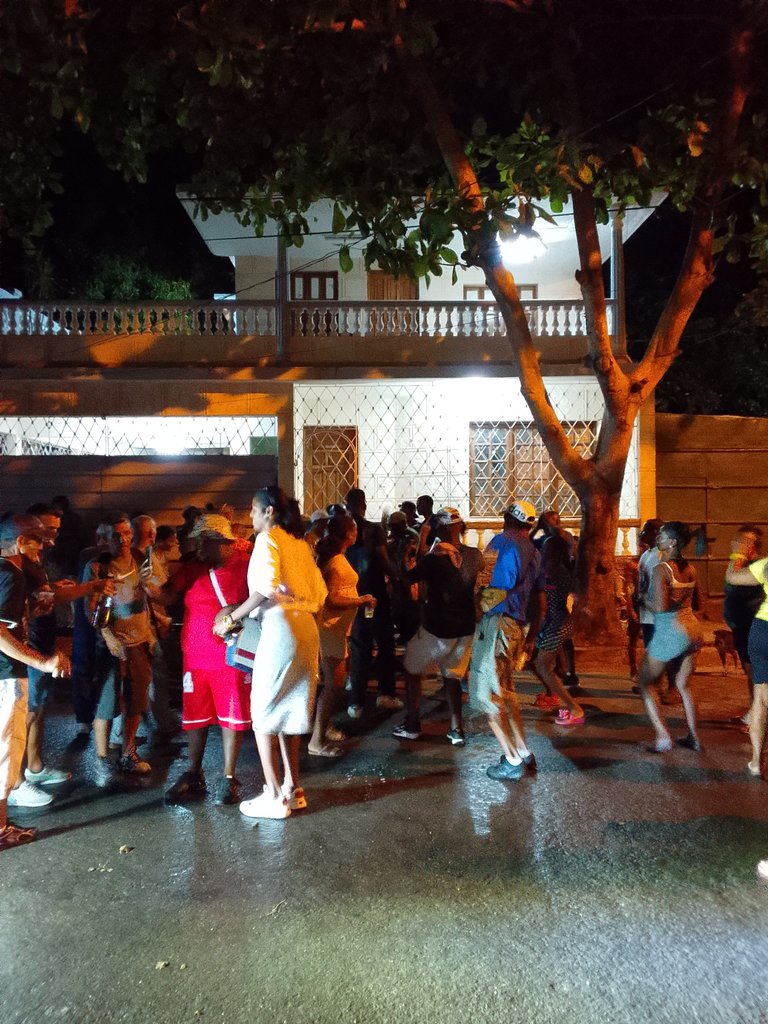
CubaCrisol
Afrocuban music is one of the richest and most vibrant cultural expressions in Cuba, a melting pot where African roots intertwine with Spanish influences. In this musical mosaic, the conga holds a special place—not only as a musical genre but also as a symbol of cultural identity that reflects the history, resilience, and festive spirit of the Cuban people.
The African Roots of the Conga
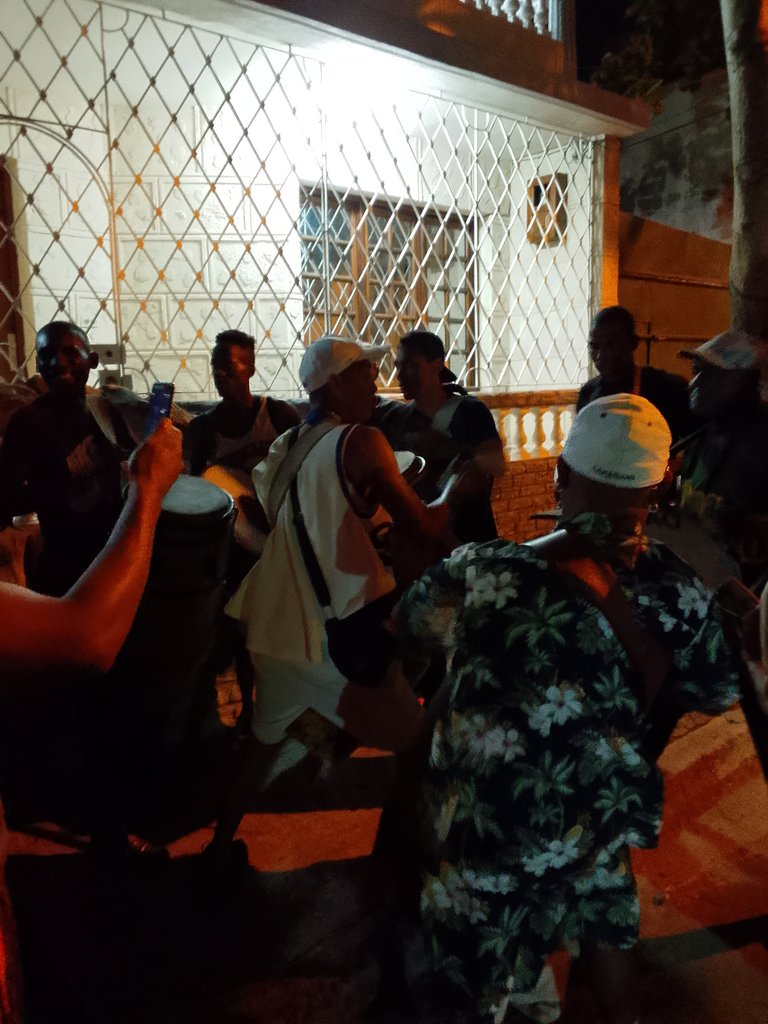
The conga has its origins in Afro-descendant communities in Cuba, particularly in the eastern and central regions of the country, including Cienfuegos, the city where I live—a UNESCO World Heritage Site.
This rhythm was developed from the drums and dances brought by African slaves during the colonial era.
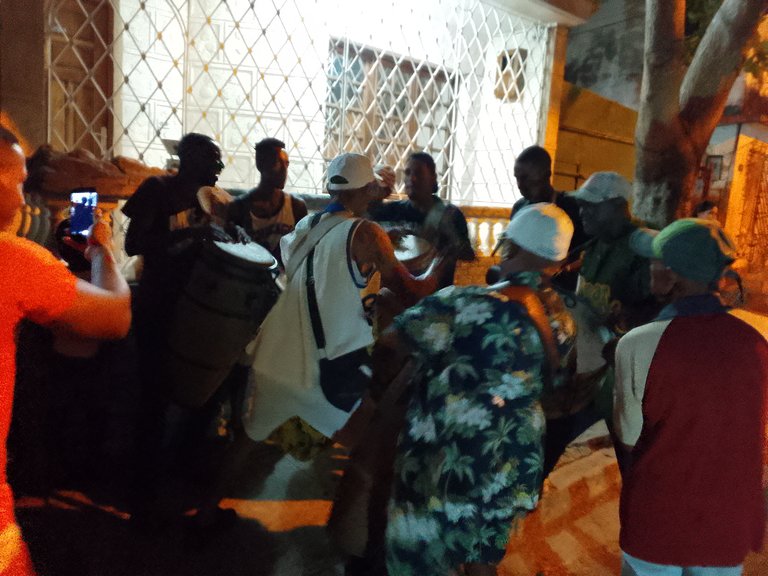
Percussion, the central element of the conga, is deeply rooted in the religious and festive traditions of the Bantu and Yoruba ethnic groups, who kept their customs alive despite colonial oppression.
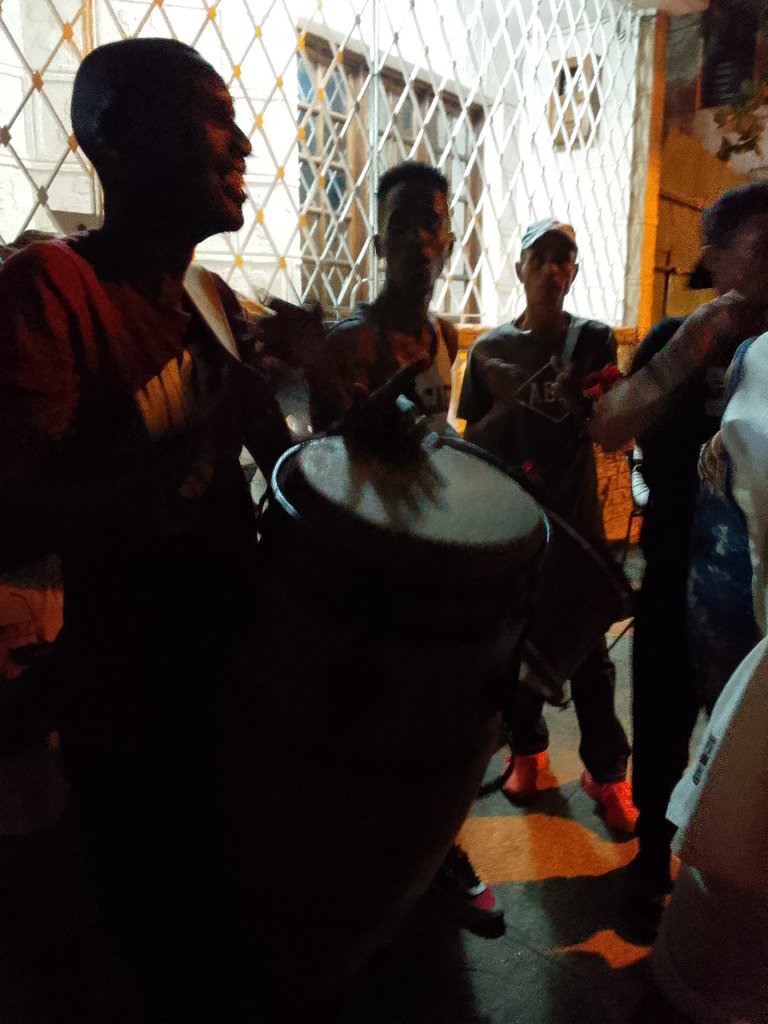
In Cienfuegos, the conga takes on unique characteristics that distinguish it from other similar musical expressions in the country. Here, the rhythm is primarily played on drums called "tumbadoras" or "congas," accompanied by instruments such as bells, cymbals, and güiros. These sounds create a hypnotic mix that invites dancing and collective celebration.
The Conga and Comparsas: Celebration and Resistance
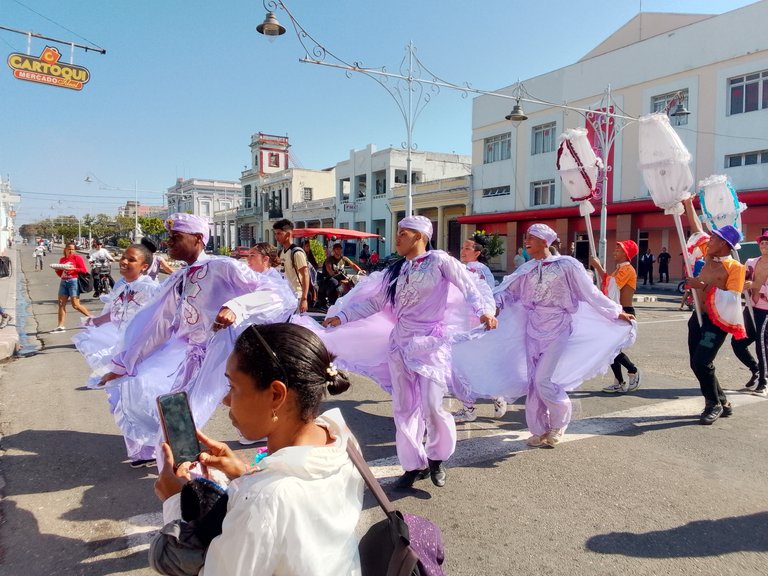
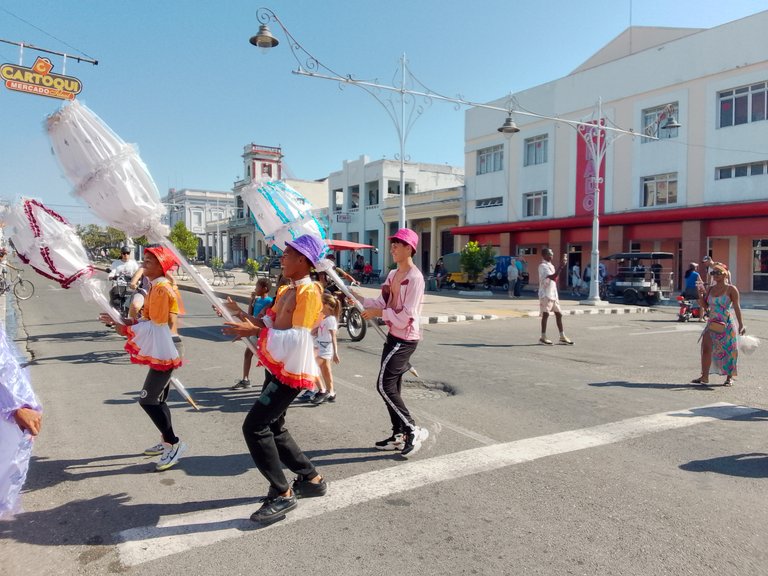
Comparsas are an integral part of the conga. These groups, made up of musicians and dancers, parade through the streets during Carnival. Comparsas are not just visual and auditory spectacles; they are also expressions of community and solidarity.
Each comparsa has its own identity, represented in its colors, costumes, and choreography. The most famous in Cienfuegos today include Los Moros Azules, Los Príncipes de la Caridad, La Gloria, among others.
These groups compete with each other in an atmosphere of healthy rivalry but also mutual respect, as they all share the same goal: to keep the tradition alive.
The conga is more than just music; it’s a way of life that unites generations and remains a vital link between the past and the present.
Moreover, it has influenced other Cuban musical genres, such as son, salsa, timba, and even the most modern of Cuban musical genres, known as reparto.
International artists have recognized the importance of the Cuban conga rhythm, incorporating it into their compositions and bringing it to global audiences.
The conga never loses its local essence or its connection to its African roots.
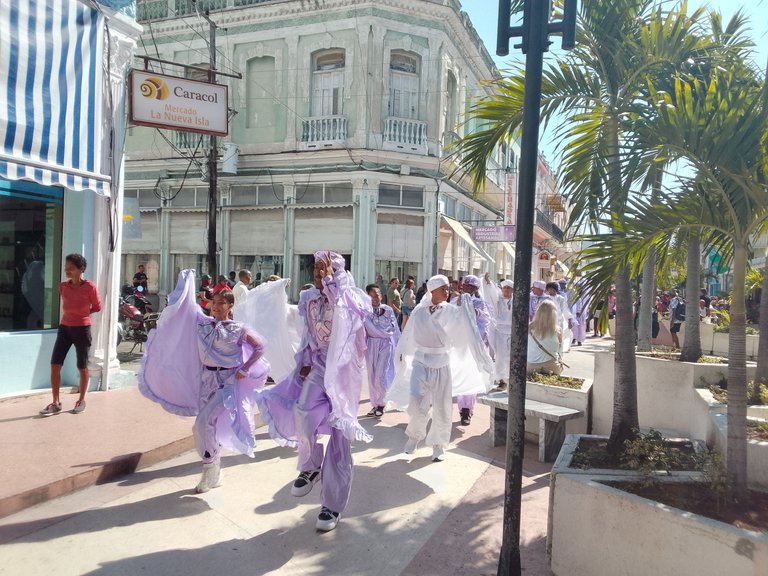
As the comparsas parade to the unmistakable rhythm of the drums, the streets fill with color, energy, and joy. It’s a moment of pride for those who see in the conga not only an artistic expression but also an affirmation of their cultural identity.
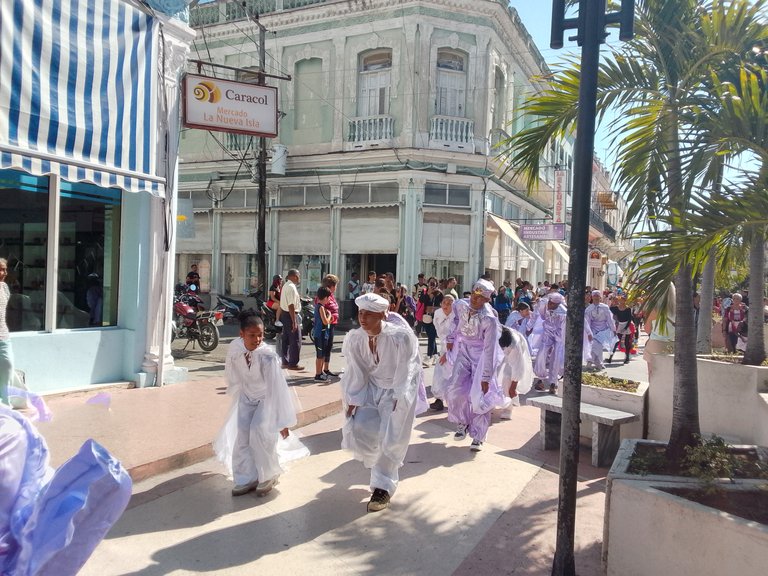
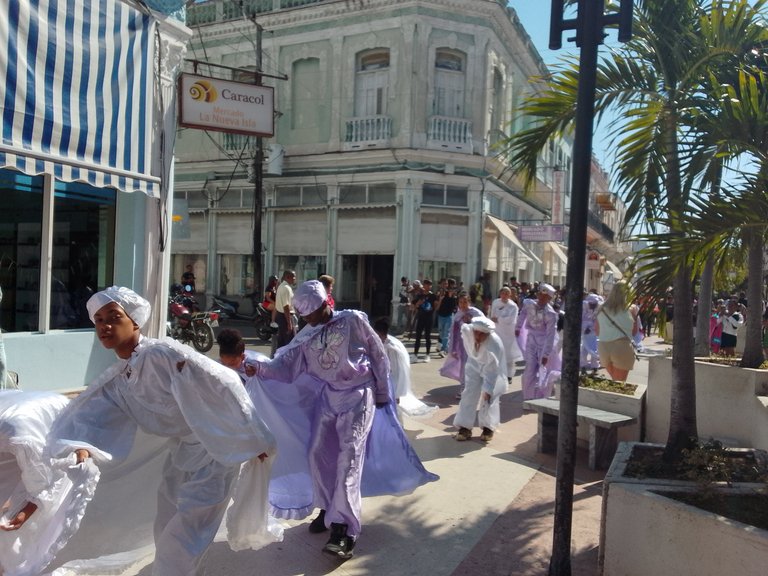
Afrocuban music, represented by the conga, is a living testament to the resilience and creativity of Cubans. Through the comparsas and carnivals, this tradition continues to evolve, adapting to modern times without losing its ancestral essence. For those who visit Cienfuegos, experiencing the conga is immersing oneself in a world of contagious rhythms, vibrant colors, and a deep history that beats in every drum. It is, without a doubt, an unforgettable experience that captures the soul of all Cubans, wherever they may be.
Hola amigos de esta hermosa comunidad de #CrossCulture. En este, mi primer post en la comunidad, deseo compartir mis experiencias con una de las manifestaciones musical-danzaria más conocidas de Cuba. Las congas y las comparsas. Espero me acompañen en este hermoso pasaje de historia y cultura.

En Cienfuegos como en cualquier lugar de Cuba, es fácil encontrar una conga vibrando en un barrio, una calle, un parque o una avenida, porque es parte de nuestra identidad y en ella, como en las comparsas no existe diferencias de color y tampoco discriminación por quien eres y muchas veces me he encontrado bailando o como se dice en Cuba, arrollando detrás de una conga, gracias al mestizaje cultural que por varios siglos ha confluido en la sangre de todos.

Cubacrisol
La música afrocubana es una de las expresiones culturales más ricas y vibrantes de Cuba, un crisol donde se entrelazan las raíces africanas con las influencias españolas. En este mosaico musical, la conga ocupa un lugar especial, no solo como un género musical, sino también como un símbolo de identidad cultural que refleja la historia, la resistencia y el espíritu festivo del pueblo cubano.
Las Raíces Africanas de la Conga

La conga tiene sus orígenes en las comunidades afrodescendientes de Cuba, particularmente en las regiones orientales y centrales del país, incluyendo Cienfuegos, ciudad donde vivo, Ciudad Patrimonio Cultural de la Humanidad.
Este ritmo fue desarrollado a partir de los tambores y las danzas traídas por los esclavos africanos durante la época colonial.

La percusión, elemento central de la conga, está profundamente arraigada en las tradiciones religiosas y festivas de las etnias Bantúes y Yorubas, quienes mantuvieron vivas sus costumbres a pesar de la opresión colonial.

En Cienfuegos, la conga adquiere características únicas que la diferencian de otras manifestaciones musicales similares en el país. Aquí, el ritmo es interpretado principalmente con tambores llamados "tumbadoras" o "congas", acompañados de instrumentos como campanas, platillos y güiros. Estos sonidos crean una mezcla hipnótica que invita al baile y a la celebración colectiva.
La Conga y las Comparsas: Fiesta y Resistencia


Las comparsas son una parte integral de la conga. Estas agrupaciones, formadas por músicos y bailarines, recorren las calles durante el Carnaval.
Las comparsas no solo son espectáculos visuales y auditivos, sino también expresiones de comunidad y solidaridad.
Cada comparsa tiene su propia identidad, representada en sus colores, trajes y coreografías. Las más famosas en Cienfuegos actualmente incluyen a Los moros Azules, los Príncipes de la Caridad, La gloria, entre otras.
Estas agrupaciones compiten entre sí en un ambiente de sana rivalidad, pero también de respeto mutuo, ya que todas comparten el mismo objetivo: mantener viva la tradición.
La conga no es solo música; es una forma de vida que une generaciones y sigue siendo un vínculo vital entre el pasado y el presente.
Además, ella ha influido en otros géneros musicales cubanos, como el son, la salsa, la timba e incluso hasta en el más moderno de los géneros musicales cubanos el llamado reparto.
Artistas internacionales han reconocido la importancia del ritmo de la conga cubana, incorporándolo en sus composiciones y llevándolo a audiencias globales.
La conga nunca pierde su esencia local ni su conexión con las raíces africanas.

Mientras las comparsas desfilan al ritmo inconfundible de los tambores. Las calles se llenan de color, energía y alegría, Es un momento de orgullo quienes ven en la conga no solo una expresión artística, sino también una afirmación de su identidad cultural.


La música afrocubana, representada por la conga, es un testimonio vivo de la resiliencia y creatividad de los cubanos. A través de las comparsas y los carnavales, esta tradición continúa evolucionando, adaptándose a los tiempos modernos sin perder su esencia ancestral. Para quienes visiten Cienfuegos, experimentar la conga es sumergirse en un mundo de ritmos contagiosos, colores vibrantes y una historia profunda que late en cada tambor. Es, sin duda, una experiencia inolvidable que captura el alma de todos los cubanos donde quiera que estén.
Este post es libre de IA.
Las fotos fueron tomadas desde mi telefono.
El vídeo es de mi propiedad.
This post is free of AI.
The photos were taken from my phone.
The video is mine.
Congratulations @ali-nhyamar78! You have completed the following achievement on the Hive blockchain And have been rewarded with New badge(s)
Your next target is to reach 400 upvotes.
Your next target is to reach 50 comments.
You can view your badges on your board and compare yourself to others in the Ranking
If you no longer want to receive notifications, reply to this comment with the word
STOPCheck out our last posts:
¡Es que somos un ajiaco imperfectamente genuino!
Muy bueno tu post, las congas son identit arias de cada región, aunque la base ritmática se conserve como género,en cada parte del país se le incorporan diferentes elementos que las distinguen a unas de otras.
Wow, me recordaste una vez que estaba en el boulevard de Cienfuegos y en eso el grupo Folclórico pasó arrollando, toda la vida se detuvo por unos instantes hasta que la conga pasó, cubanos y turistas por igual hicieron un alto en sus itinerarios para disfrutar el momento, la música, los trajes coloridos. Supongo que algunos prestaron más atención a los subtextos, como los trajes, colores y símbolos que identificaban a los orishas y demás, pero lo que si tengo por seguro es que todos disfrutaron por igual la conga.
Excelente post. Este género es tan cubano que a todos nos va en la sangre. Pude ver a los Tambores de Bejucal y me encantaron. Las fotos fenomenales..
Esa música tiene su cosa
Reblog!
Repost!
React!
3Rs
Thanks you
Hello.@hivecuba
I keep discovering that the accounts publishing in your community continue to use AI to generate their writings.
I think that we mentioned this before.
I would appreciate it if you engaged more in teaching newly onboarded users about posting guidelines.
Asking the user to write that the post is void of AI writing will not mislead the investigation.
The post was written by the author but with heavy AI-assisted rewording/spinning.
Thank you.
Hi.
Let's create a way to communicate to manage this issue. Please contact Manu on Discord; his user is manuphotos.
We are obviously against IA-generated blog posts, except the images if they are made just to support the content. We teach about the use of IA but not everyone goes through HiveCuba's channels before posting, many times they just enter after a friend introduces them to Hive and we can't control that.
Let's continue on Discord.
Ok, thanks a lot for explaining.